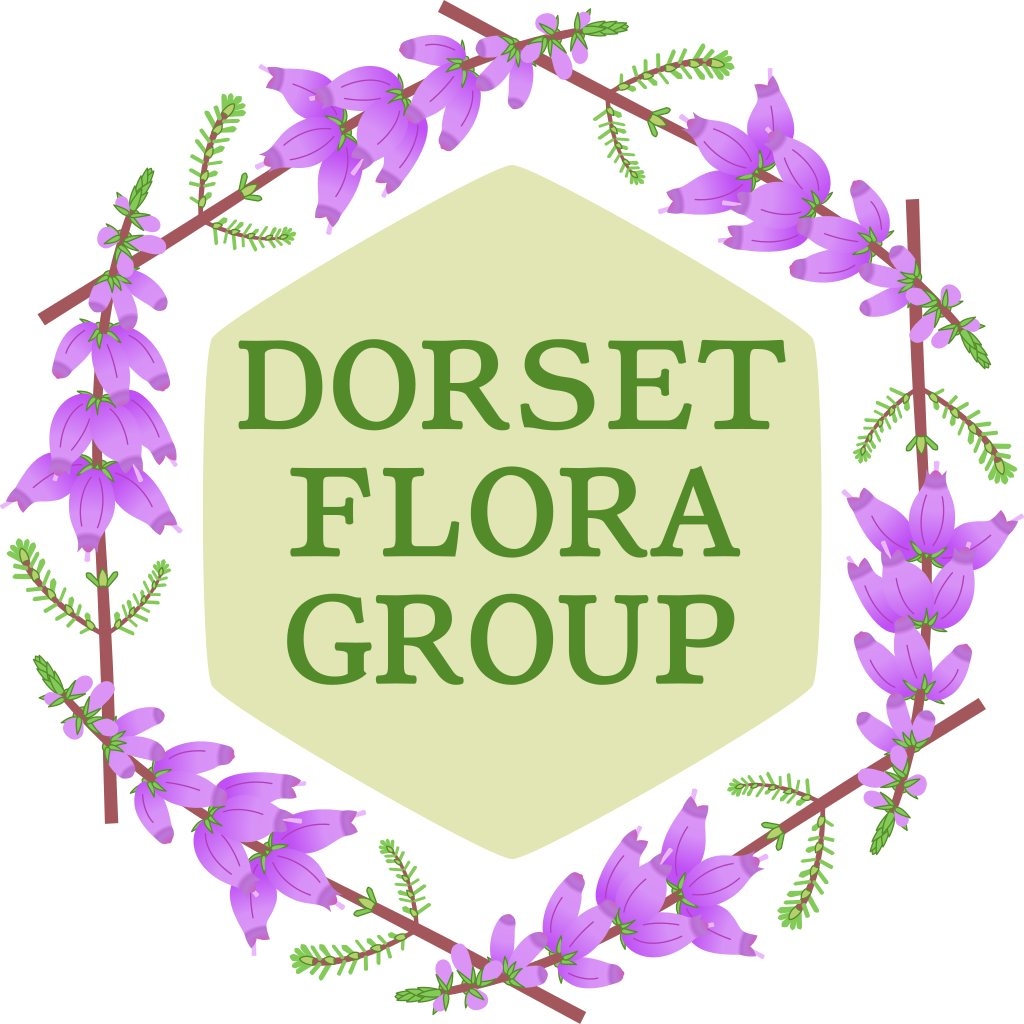
DFG maintains an active programme of events including field trips and training days alongside a number of projects. Meetings are open to all and members receive advance notice of the programme via email. The DFG newsletter is called The Dorset Heath and the latest issue is now available.
If you would like to join the Dorset Flora Group, please complete and return a Recorders Register Opt-in Form, ticking the Dorset Flora Group box. You may also like to sign up to receive other information from DERC. All members are welcome to sign up to the DFG WhatsApp group by sending your mobile number to Jean and Tom.
If you are interested in helping with the Dorset Rare Plant Register please email Robin Walls or call him on 01305 852444. Robin is the County Recorder for vascular plants and he is BSBI vice-county for Dorset. His recorder notes give plenty of ways in which botanists can hone their botanical skills on difficult species. For those of you who are not so confident, still learning, or a bit rusty on your plant identification, joining in with the recording days is a good way to improve your skills. When you are ready to submit your data, there are notes on Living Record below plus recording forms and other useful resources.




History of DFG
Founded in 2007, the Dorset Flora Group works with members of Dorset Natural History and Archaeological Society (DNHAS), Wessex Bryology, Dorset Environmental Records Centre (DERC) and Dorset Wildlife Trust (DWT) to continually update the record of Dorset’s wild flowers, mosses, seaweeds, lichens and fungi (which are not strictly plants). We also aim to help the Botanical Society of the British Isles (BSBI) and other national societies concerned with conservation such in Dorset.
We aim to:
- survey sites throughout Dorset to maintain an up to date records of wild plants, in partnership with DERC;
- provide a focal point for botanists recording within the County;
- encourage the study of Dorset’s flora and help people to improve their skills;
- support the vice-county recorders, particularly with rare and scarce species, especially those requiring specialist determination;
- hold field meetings and study days to record the Dorset flora;
- publish the Dorset Heath as a record of our activities.
We help charities, including the National Trust, Dorset Wildlife Trust (DWT) and the Royal Society for Protection of Birds (RSPB) manage their nature reserves, by recording the habitats and plants found there. More recently DFG have been assisting DWT with the Sites of Nature Conservation (SNCI) project monitoring sites across the county. You can find out more about the SNCI project here.
Dorset has an undulating countryside with areas of unimproved grassland on slopes too steep or too wet to be suitable for agriculture. . In Purbeck, there are extensive areas of lowland heathland with plants such as Marsh Gentian, Dorset Heath and all the UK sundews, whilst in west Dorset there are species rich wet meadows. The clean, chalk rivers are scarce in a European context and many contain Stream Water Crowfoot (Ranunculus penicillatus ssp. pseudofluitans). Wild places to explore range from the Neolithic hill forts, often with excellent grassland habitats, to ancient woodlands, hay meadows or even the Beech Avenue at Kingston Lacy where rare orchids such as White Helleborine and Bird’s-nest Orchid may be found by the diligent searcher.
Living Record

At the 2011 DFG AGM Carolyn Steele (DERC Manager) presented Living Record as a way to keep your own botanical data and provide data to DERC. It is an online system that allows you to enter records after each field trip. The county recorder (Robin for plants) can then review the records and contact you if there are any queries.
Living Record can be found on our Living Record page. You will need to register and you will then be emailed a user name and password. You can join the Dorset Flora Group and start adding data. With Living Record you will also be able to record other subjects like dragonflies and butterflies. There are plenty of guidance notes (look for the (?) sign) but do contact DERC if you have any queries.
Dorset Botanists
Professor Good, Cyril Diver and Sir Maurice Abbot-Anderson have all been inspired by Dorset’s wildlife. Thank you to Peter and Margaret Cramb for this article on another of Dorset’s early botanists, Arthur Graveson which has some fascinating insights of our changing flora.
In the footsteps of Arthur Graveson – West Dorset’s Reticent Botanist
The DFG Facebook Page
There already is a DFG Facebook Page but it was set up just before the Pandemic and lapsed into silence shortly thereafter. But now it is being revived! The aim of the Facebook page will be to complement the Dorset Heath Blog with items of news, details of events, and abstracts of blog postings. Also, if you have any questions or observations about plants that you would like to share, send a message through Facebook and we will post it.
Please, if you haven’t already done so, log on to Facebook and Follow and/or Like, the DFG Page.




Resources
- DFG 2025 (full programme)
- DFG 2024 (full programme)
- Recorders Register Opt-in Form
- Dorset Flora tick list 2025
- Flora Card Name Changes
- Rare plant recording form
- Recording in Excel
- W method – data and protocol
- Helpful Recording Notes (2015)
- Dorset Notable Plants by Habitat
- Dorset Rare Plant Register List 2025 (PDF)
- Dorset Rare Plant Register Index 2022 (Excel)
- Urban Flora Project
- DFG Constitution 2018
- Sir Maurice Abbot-Anderson and Flora League (August 2018)